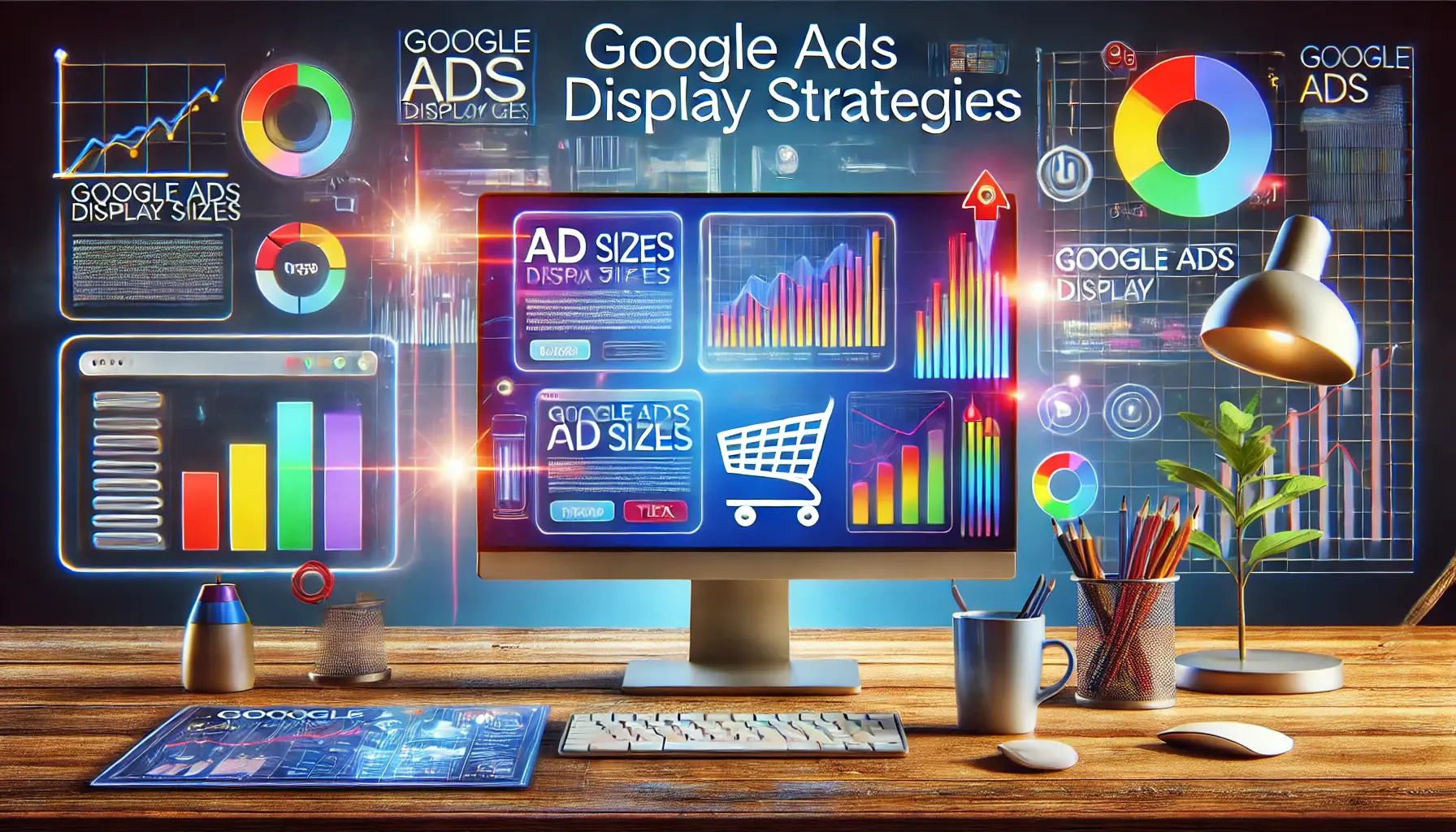Embarking on the journey of Facebook advertising can be both exhilarating and challenging.
With the ever-evolving landscape of digital marketing, it’s crucial to stay ahead of the curve.
This comprehensive guide delves into the art of ‘Ad Set Patience’ and unveils four best practices for optimizing your Facebook ads.
Understanding these practices is key to navigating the complex world of Facebook advertising, ensuring your campaigns not only resonate with your audience but also deliver tangible results.
Facebook advertising, a dynamic and potent tool in the marketer’s arsenal, demands a strategic approach.
‘Ad Set Patience’ is not just a concept but a pivotal practice in the realm of Facebook ads.
It involves a deep understanding of how ad sets work, the patience to let them mature, and the insight to optimize them effectively.
This guide aims to equip you with the knowledge and techniques necessary to master Facebook ad optimization, transforming your ad sets into powerful conduits for your marketing objectives.
- The Facebook Algorithm: The Foundation of Ad Set Optimization
- Strategic Audience Targeting: Beyond Demographics
- Optimizing Ad Placements and Formats
- Budget Allocation and Bid Strategy
- Continuous Testing and Iteration
- Leveraging Facebook Analytics and Insights
- Embracing the Power of Mobile Optimization
- Mastering Facebook Ad Optimization: A Strategic Approach
- Ad Set Patience: Essential FAQs on Facebook Ad Optimization
The Facebook Algorithm: The Foundation of Ad Set Optimization
The Facebook algorithm, a complex and often misunderstood component of the platform, plays a critical role in the success of your ad campaigns.
Grasping its nuances is the first step towards effective ad set optimization.
This algorithm determines not only who sees your ads but also how often and in what context.
It’s a system that rewards relevance and engagement, making it essential for advertisers to create content that resonates with their target audience.
One of the key aspects of working with the Facebook algorithm is recognizing the importance of the learning phase.
During this initial period, the algorithm gathers data on how users interact with your ad.
This phase is crucial for the long-term success of your campaign, as it sets the foundation for how your ad will perform.
Patience during this phase is vital; frequent changes or adjustments can reset the learning process, leading to suboptimal results.
Maximizing Ad Relevance: Crafting Compelling Content
To align with the Facebook algorithm’s preference for relevance, it’s imperative to craft content that engages and captivates your audience.
This involves a deep understanding of your target demographic, their interests, and behaviors.
Creating ads that speak directly to their needs and preferences will not only boost engagement but also enhance the overall effectiveness of your ad sets.
Engaging content goes beyond mere visuals and copy.
It’s about creating a narrative that connects with your audience on an emotional level.
Whether it’s through storytelling, humor, or compelling facts, your ad content should be a reflection of what your audience finds valuable and interesting.
This approach not only increases the likelihood of engagement but also fosters a deeper connection between your brand and your audience.
Key Point: The Facebook algorithm favors ads that resonate with the audience, making it crucial to create content that is not only visually appealing but also emotionally engaging and relevant to your target demographic.
Strategic Audience Targeting: Beyond Demographics
Effective Facebook ad optimization transcends basic demographic targeting.
It involves a strategic approach to audience segmentation, ensuring your ads reach the most receptive and relevant users.
This process is not just about age, gender, or location; it’s about diving deeper into the interests, behaviors, and online activities of your potential customers.
One powerful method in audience targeting is the use of lookalike audiences.
This feature allows you to reach new people who share similar characteristics with your existing customers.
By leveraging the data from your best-performing customer segments, you can create lookalike audiences that are more likely to engage with your ads and convert.
Utilizing Custom and Lookalike Audiences
- Custom Audiences: Start by creating custom audiences based on user interactions with your website, app, or Facebook content. This approach targets users already familiar with your brand, increasing the chances of engagement and conversion.
- Lookalike Audiences: Expand your reach by creating lookalike audiences. These are new users who closely match the characteristics of your custom audience. This method is excellent for reaching potential customers who are likely to be interested in your products or services.
Segmentation for Precision Targeting
Segmenting your audience is crucial for delivering tailored messages that resonate.
By dividing your audience based on specific criteria, you can create more personalized ad experiences.
This not only improves engagement rates but also enhances the overall effectiveness of your campaigns.
Consider segmenting your audience based on factors such as purchase history, website activity, or engagement with previous ads.
This level of precision allows you to tailor your messaging and offers to meet the specific needs and interests of each segment, leading to higher conversion rates and a better return on investment.
Idea: Leverage Facebook’s detailed targeting options to refine your audience segments. Utilize interests, behaviors, and life events to create highly targeted ad sets that speak directly to the unique needs and preferences of each segment.
Optimizing Ad Placements and Formats
Choosing the right ad placements and formats is a critical aspect of Facebook ad optimization.
It’s not just about where your ads appear, but also how they are presented.
Different placements and formats can yield varying results, and understanding which combinations work best for your audience and objectives is key to maximizing ad performance.
Facebook offers a variety of ad placements, including the News Feed, Instagram, Audience Network, and Messenger.
Each of these platforms caters to different user behaviors and preferences, making it essential to select placements that align with your campaign goals and target audience.
Effective Use of Ad Formats
- Image Ads: Ideal for showcasing products or services with compelling visuals. They are simple yet effective, especially when the imagery is high-quality and attention-grabbing.
- Video Ads: Great for storytelling or demonstrating products in action. They can be more engaging than image ads and are particularly effective in capturing user attention.
- Carousel Ads: Allow you to showcase multiple images or videos in a single ad. This format is perfect for highlighting different features of a product or telling a sequential story.
- Instant Experience Ads: Provide a full-screen experience to users, offering a more immersive and interactive way to engage with your content.
Choosing the Right Placements
Ad placement selection should be based on where your audience spends most of their time and how they interact with content.
For instance, if your target audience is highly active on Instagram, focusing your ad spend on Instagram placements might yield better results.
Similarly, if your audience primarily engages with content on the Facebook News Feed, then that should be your primary placement.
It’s also important to consider the nature of your ad content when selecting placements.
Some content may perform better in the News Feed, while others might be more suited to Stories or Messenger.
Testing different placements and analyzing performance data is crucial in identifying the most effective options for your campaigns.
Note: While automatic placements can be a good starting point, manually selecting and testing different placements can lead to more optimized and cost-effective results.
Budget Allocation and Bid Strategy
Mastering the art of budget allocation and bid strategy is essential for Facebook ad optimization.
How you allocate your budget and choose your bidding options can significantly impact the performance of your ad sets.
It’s about finding the right balance between spending enough to reach your goals and optimizing bids to get the best return on investment.
Facebook offers several bidding strategies, including cost-per-click (CPC), cost-per-impression (CPM), and cost-per-action (CPA).
Each strategy has its advantages and can be used based on the specific objectives of your campaign.
Effective Budget Management
- Setting a Realistic Budget: Your budget should align with your campaign goals and expected outcomes. It’s important to set a budget that allows your ads to gather enough data for optimization without overspending.
- Adjusting Budget Based on Performance: Monitor your ad performance closely and be ready to adjust your budget based on what’s working. If an ad set is performing well, increasing its budget can amplify its success.
Choosing the Right Bid Strategy
Selecting the appropriate bid strategy is crucial for maximizing ad efficiency.
If your goal is to drive traffic, a CPC strategy might be most effective.
For brand awareness objectives, a CPM strategy could be more suitable.
When your focus is on conversions, a CPA strategy can help ensure you’re getting the most value for your spend.
It’s also important to consider the level of competition in your target market when choosing a bid strategy.
In highly competitive markets, a more aggressive bidding approach might be necessary to ensure your ads are seen by your target audience.
Truth: A well-planned budget and bid strategy can significantly enhance the performance of your Facebook ads, leading to better results and a higher return on investment.
Continuous Testing and Iteration
The landscape of Facebook advertising is ever-evolving, making continuous testing and iteration a cornerstone of successful ad optimization.
The key to mastering Facebook ads lies in your willingness to experiment, analyze, and refine your strategies.
This iterative process helps in uncovering what resonates best with your audience and drives the desired results.
Testing can involve various elements of your ad sets, including different creatives, audience segments, placements, and bidding strategies.
The insights gained from these tests are invaluable in shaping more effective and efficient campaigns.
Implementing A/B Testing
- Creative Variations: Test different images, videos, and copy to see which combinations perform best. Even small changes in visuals or wording can have a significant impact on ad performance.
- Audience Segments: Experiment with different audience segments to identify which ones are most responsive to your ads. This can involve varying demographics, interests, or behaviors.
Analyzing and Applying Test Results
After conducting tests, it’s crucial to analyze the results thoroughly.
Look for patterns and trends that indicate which variations are most effective.
This analysis should go beyond surface-level metrics like click-through rates or impressions; delve into conversion rates, cost per acquisition, and return on ad spend to get a comprehensive understanding of performance.
Applying what you learn from testing to your future campaigns is where the real value lies.
Use these insights to refine your ad sets, targeting strategies, and overall approach to Facebook advertising.
Remember, what worked yesterday might not work tomorrow, so staying agile and responsive to changes is key.
Featured Info: Continuous testing and iteration are not just about improving current campaigns; they’re about gaining knowledge and insights that can be applied to future strategies for sustained success in Facebook advertising.
Leveraging Facebook Analytics and Insights
Utilizing Facebook’s analytics and insights is a critical aspect of ad set optimization.
These tools provide a wealth of data that can help you understand how your ads are performing, who is engaging with them, and where there might be opportunities for improvement.
By analyzing this data, you can make informed decisions that enhance the effectiveness of your campaigns.
Facebook’s analytics platform offers various metrics, including reach, engagement, conversion rates, and return on ad spend (ROAS).
Understanding these metrics and how they relate to your campaign objectives is essential for effective optimization.
Key Metrics to Monitor
- Engagement Metrics: Track likes, comments, shares, and video views to gauge how your audience is interacting with your ads. High engagement rates often indicate content that resonates with your audience.
- Conversion Metrics: Monitor actions such as website clicks, form submissions, or purchases to understand how effectively your ads are driving the desired outcomes.
- Return on Ad Spend (ROAS): Calculate the revenue generated from your ads relative to the amount spent. This metric is crucial for evaluating the financial effectiveness of your campaigns.
Utilizing Insights for Strategy Refinement
Facebook’s insights go beyond basic metrics, offering deeper analysis into audience demographics, behavior, and ad performance over time.
Use these insights to refine your targeting, adjust your creative approach, and optimize your bidding strategies.
For instance, if you notice certain demographics are more responsive to your ads, you can adjust your targeting to focus more on these groups.
Additionally, insights into ad performance over time can help you identify trends and patterns.
This can be particularly useful for seasonal businesses or those with fluctuating demand, allowing for strategic adjustments in ad spend and targeting during peak periods.
False Information: Relying solely on surface-level metrics like impressions or clicks can lead to misguided conclusions about ad performance. It’s essential to delve deeper into analytics and insights for a comprehensive understanding of your campaign’s effectiveness.
Embracing the Power of Mobile Optimization
In today’s digital landscape, optimizing Facebook ads for mobile users is not just a recommendation; it’s a necessity.
With the majority of Facebook users accessing the platform via mobile devices, your ad sets must be tailored to fit the unique characteristics and behaviors of mobile audiences.
This involves creating mobile-friendly content, ensuring fast loading times, and considering the user experience on smaller screens.
Mobile optimization also includes understanding how mobile users interact with Facebook ads differently than desktop users.
This can affect everything from the type of content that resonates to the way users engage with your ads.
Creating Mobile-Friendly Ad Content
- Concise and Engaging Copy: Mobile users often scroll quickly through their feeds, so your ad copy should be short, engaging, and to the point to capture their attention.
- Visually Appealing Creatives: Use high-quality images and videos that are visually appealing and easily viewable on smaller screens. Consider the aspect ratios and resolution for optimal display on mobile devices.
Optimizing for Mobile User Experience
Ensuring a seamless mobile user experience is crucial for the success of your Facebook ads.
This includes optimizing the landing pages your ads link to.
They should be mobile-responsive, with fast loading times and easy navigation.
A poor mobile landing page experience can significantly reduce the effectiveness of your ads, no matter how well they perform on Facebook itself.
Additionally, consider the call-to-action (CTA) in your ads.
Mobile users are more likely to engage with simple and clear CTAs.
Ensure that the action you want users to take is straightforward and can be easily completed on a mobile device.
Key Point: Mobile optimization is a critical component of Facebook ad success. By creating mobile-friendly content and ensuring a seamless user experience, you can significantly increase the effectiveness of your ad campaigns among mobile audiences.
Mastering Facebook Ad Optimization: A Strategic Approach
In the dynamic world of digital marketing, mastering Facebook ad optimization is a journey that requires patience, strategic thinking, and continuous adaptation.
The practices outlined in this guide are not just steps but pillars that support a robust and effective Facebook advertising strategy.
Embracing these practices will not only enhance your ad performance but also contribute to a deeper understanding of your audience and the digital landscape.
Key Takeaways for Effective Facebook Ad Optimization
- Understanding the Facebook Algorithm: The foundation of any successful Facebook ad campaign lies in comprehending and aligning with the platform’s algorithm.
- Strategic Audience Targeting: Moving beyond demographics to a more nuanced understanding of audience behaviors and preferences is crucial for creating resonant ad content.
- Optimizing Ad Placements and Formats: Selecting the right placements and formats can significantly impact ad performance, making it essential to test and identify the most effective combinations.
- Budget Allocation and Bid Strategy: Effective management of your budget and choosing the right bid strategy are key to maximizing ad efficiency and ROI.
- Continuous Testing and Iteration: The ever-evolving nature of Facebook advertising demands a commitment to ongoing testing and refinement of strategies.
- Leveraging Facebook Analytics and Insights: Utilizing the wealth of data available through Facebook’s analytics tools is vital for informed decision-making and strategy refinement.
- Embracing the Power of Mobile Optimization: With the majority of Facebook users on mobile, optimizing ads for mobile is no longer optional but a necessity.
As we navigate the complexities of Facebook advertising, ‘Ad Set Patience’ emerges as a guiding principle.
It’s about allowing time for learning, testing, and gathering insights.
This patience, coupled with a strategic approach to optimization, can transform your Facebook ads into powerful tools for achieving your marketing objectives.
By embracing these best practices, you’re not just optimizing ads; you’re building a deeper connection with your audience and paving the way for long-term success in the digital arena.
Enjoyed the article? Let its author handle your social media ads. Visit our service page to get started!
Ad Set Patience: Essential FAQs on Facebook Ad Optimization
Delving into Facebook ad optimization can raise numerous questions.
To assist you in navigating this complex terrain, here are some frequently asked questions that shed light on the best practices for optimizing your Facebook ads effectively.
The Facebook Pixel is a crucial tool for tracking user interactions with your ads and website, providing valuable data for optimizing ad performance.
Choose a campaign objective that aligns with your business goals, such as brand awareness, lead generation, or conversions.
Effective strategies include using custom and lookalike audiences, and segmenting based on user behavior and interests.
Select ad placements based on where your audience is most active, like the News Feed, Instagram, or Messenger.
Focus on engagement metrics, conversion rates, and Return on Ad Spend (ROAS) to gauge ad effectiveness.
Mobile optimization is crucial, as most Facebook users access the platform via mobile devices. Tailor ads for mobile user experience.
Continuous testing helps identify the most effective ad elements, leading to improved performance and engagement.
Allocate your budget based on ad performance and choose bid strategies that align with your campaign objectives and market competition.










